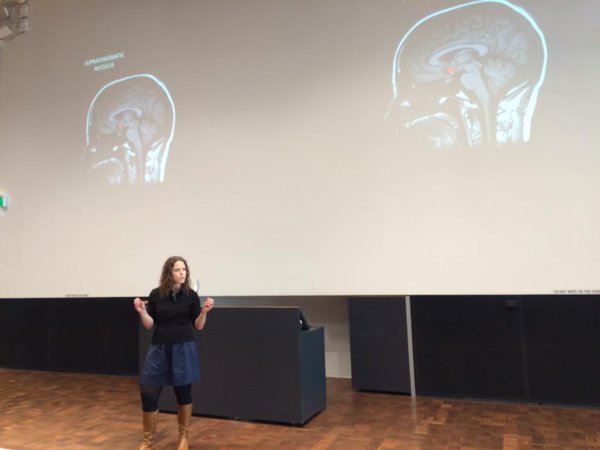Jamie is completing her PhD (Clinical Psychology) investigating the interactions between sleep, the body clock, and reward.
Briefly tell us about your research project.
Like our ancestors, we have evolved to live on a planet that is governed by a day/night cycle. Given that humans have good daytime vision there is evidence for being biologically primed to seek out rewards (such as hunting prey in the past) when our chances of reward are high, and associated risks relatively low. By this same token, we may withdraw from the environment when light is less naturally available – closer to sleep onset and offset.
In modern society, this reward-seeking behaviour may be reflected in daily changes in our drive to look for rewards, such as money. In my PhD we have shown through behavioural and neuroimaging data that reward-seeking behaviour is higher, but neural activity lower, in response to rewards at 2pm relative to 10am and 7pm in healthy young men. The lowered activity of the left putamen we believe may be explained by a ‘prediction error’ of the brain. If we are primed to seek out rewards in the afternoon, the relatively increased neural activation closer to sleep offset and onset may reflect increased neuronal activation to unexpected rewards.
By examining patterns of reward-seeking behaviour in healthy individuals it sheds light on circadian (the body clock) and reward dysregulation in mood disorders such as depression and bipolar disorder. In these mood disorders individuals may have disturbed circadian systems that could in turn alter the reward response manifesting in depressive and manic symptoms. By understanding the patterns of healthy reward behaviour we can examine what is disturbed in mood disorders to point to therapeutic targets. This work has been supported by a grant from the Barbara Dicker Brain Sciences Foundation.
Who are your supervisors?
Professor Greg Murray, Dr. Matthew Hughes, and Dr. Ben Bullock. Professor Murray is a world-renowned researcher in circadian rhythms and bipolar disorder and he is interested in understanding how daily fluctuations in reward response may be dysregulated in psychopathologies. Dr. Hughes and Professor Rossell are co-investigators on this project providing expertise in neuroimaging and data analysis for this novel time of day experiment.
What imaging equipment are you using?
We are using a 3T Siemens TIM Trio MRI scanner housed at Swinburne University of Technology (Hawthorn, Australia).
How did you find accessing and using the equipment?
To control for extraneous variables, we tested the 16 participants at three times of day (10am, 2pm, and 7pm) within a 24-hour timeframe, with counter-balanced start times. Given this repeated measures testing that included scanning outside of business hours, we were fortunate enough to have a dedicated research facility and staff which we could conduct this project in.
Did you work across sites? If so, how did you find accessing the equipment across sites?
No, the work was conducted solely through Swinburne University of Technology.
Thank you very much for your time, Jamie.
Thank you for inviting me to contribute!






0 Comments